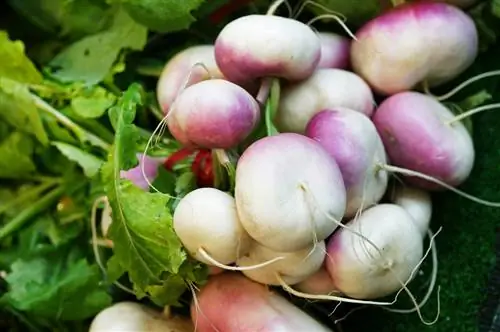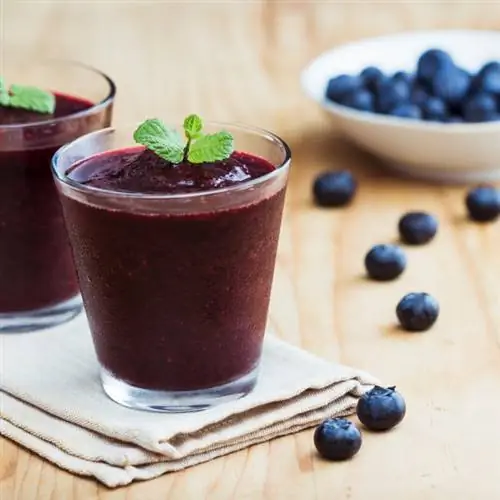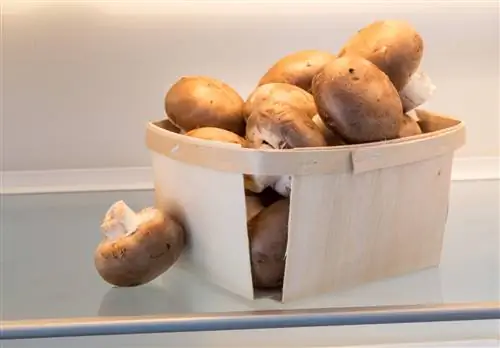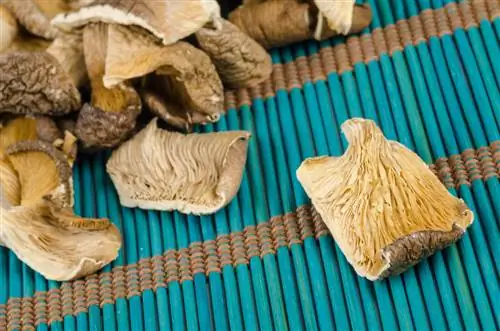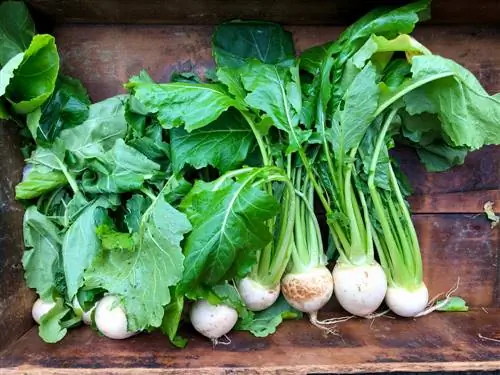- Author admin [email protected].
- Public 2023-12-16 16:46.
- Last modified 2025-01-23 11:22.
As the name suggests, the tender turnips are a typical spring vegetable. The beets impress with their fine, slightly sweet taste. May beets go well in many salads and taste great when eaten raw with a delicious dip. But they are also good for savory baked dishes or as a vegetable side dish. You can find out how to preserve seasonal vegetables by freezing in this article.
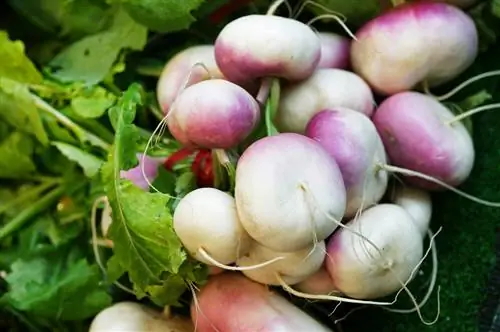
How can I freeze May turnips correctly?
To freeze May turnips, you should wash, peel, cut into strips or cubes and blanch fresh turnips, then rinse them in ice water and let them drain. Then put the vegetables in freezer bags or containers and freeze them. Frozen May turnips are no longer suitable for eating raw.
Tips for shopping
You should only freeze turnips that are fresh. You can recognize this by the following features:
- The skin is completely smooth and has no grooves, furrows or cuts.
- Leaves and stems are crisp and have a juicy light green color.
- Do the thumb test: If the turnip gives in when pressed with your thumb, it may be woody.
After purchasing, store the turnips, unwashed and with the greens, in the vegetable compartment of the refrigerator. They keep here for a good week.
Freezing turnips
If you have a lot of turnips in the garden, you can preserve part of the harvest for around ten months by freezing:
- Wash the turnips and peel off the peel with a vegetable peeler.
- Cut into strips or cubes according to personal preference.
- Bring s alted water to the boil in a saucepan.
- Prepare a bowl of ice water.
- Add vegetables to the boiling water and blanch for two minutes.
- Then quench.
- Drain in a colander and allow to cool completely.
- Pour into freezer bags or suitable containers and freeze.
Once frozen, turnips become soft after thawing and are no longer suitable for raw consumption. However, you can use them, still frozen, like fresh turnips for tasty side dishes or casseroles. Please do not let them cook for too long, otherwise they will no longer have any bite.
Tip
You can sow turnips in the garden very early in the year, for example in the cold frame. After just six to eight weeks, with a diameter of eight to twelve centimeters, they are ready to harvest. It is recommended to cover the beets with a net after germination, as cabbage flies love the delicate leaves of the plants.

